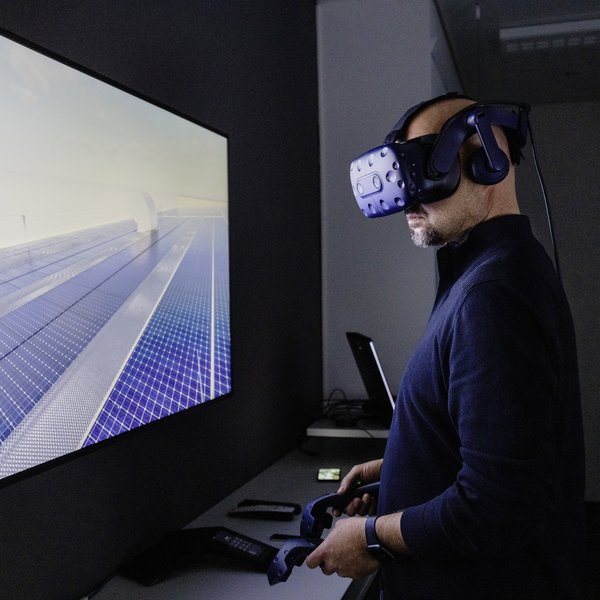
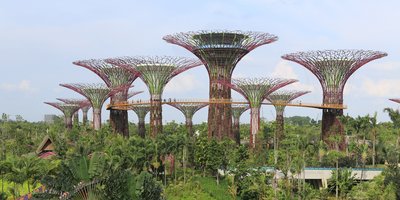
Urban planning: How urban spaces are getting greener
We’re not just talking about green facades or roofs. We’re talking about large-scale green spaces that offer a sustainable way of making a tangible change for the sake of the climate – such as the urban development area Clichy-Batignolles in Paris, for example. Here, long before ground was broken for the 6,500 or so apartments, the design of the park was already underway with the planting of various trees and resilient bushes. The increase in heatwaves has led to the formation of what is known as the eco-district. The park was established in 2015, meaning that the more than 12,000 residents will be able to enjoy the lush greenery straight away once the new 45-hectare development is completed in 2024. The project has already won numerous awards for this – including the Sustainable City Grand Prize and the New Urban Districts award. Complete greening and a rainwater management approach based on the sponge city concept are being implemented throughout the entire eco-district to increase climate resilience. The rainwater is collected and used with the help of an irrigation wind pump to water the new plants and for the toilets in the residential units. The new district relies on geothermal energy supply and sustainable mobility. The high transpiration pipe of the green areas provides continuous cooling, thereby forming not only the new quarter’s geographic heart but also its symbolic one. There is hardly any impermeable paving – water-permeable concrete slabs and surfaces are used for the walkways. The city of Paris wants Clichy-Batignolles to stand as a model for sustainable urban development, free of CO2 and without any fossil energy. Through this project, the city aims to realise its ambitions in terms of mixed functions and social diversity, energy efficiency, reducing greenhouse gas emissions, and increasing biodiversity.
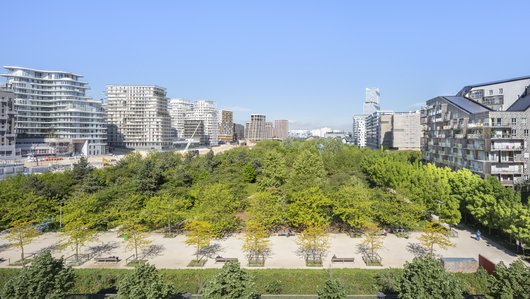

Resilience as the goal
Singapore wants to be the greenest city in the world by 2030, at least according to the nation’s Green Plan. But there’s much more at stake than green spaces. The economy too needs to be green and the aims for supplying everything from logistics to energy are ambitious. Resilience is the overarching goal behind every effort. What may be the world’s most futuristic park also stands as proof that technology and nature need not be mutually exclusive. In Gardens by the Bay, vertical gardens with tropical climbers and ferns have been created on 18 Supertrees that reach heights of up to 50 metres. The concrete and steel structures bring together nature, innovation and technology as the trees collect rainwater and solar energy and use it to supply and illuminate the park and the two greenhouses. In the evenings there is a spectacular light and music show on the park grounds, which span 101 hectares. The two main greenhouses cover an area of 20,000 square metres. The Flower Dome focuses on plants cultivated in the region and on exploring the topic of global warming. It also boasts a mountain with a 35-metre peak and artificial waterfall. The Cloud Forest is where visitors explore the relationship between soil and plants. The greenhouses are powered by the energy of the Supertrees – linked by 20-metre bridges. Singapore has over 300 parks, half of the land mass is undeveloped, leafy and in parts even classified as a nature reserve. A radical law means that every blade of grass that is built over is replaced – when new areas are developed, any loss of nature must be replaced vertically, namely through façade plants or similar greening.
Green for everyone
One of the oldest and simultaneously largest urban green spaces in the world is Central Park in the heart of Manhattan, New York. The park, also known as New York’s green lung, spans around 349 hectares. Built in 1859, initially just for the rich, the landscaped park soon became a green haven for everyone. Around 25 million people visit the inner-city park every year.With Stanley Park in Vancouver, Canada also has an impressive city park on a four-square-metre peninsula. Once the hunting grounds and habitat of the Squamish, a Canadian First Nation, the original forests and green spaces now serve as a recreational area with picnic spots, lawns and sports facilities. The park is surrounded by the approximately ten-kilometre-long Stanley Park Drive, which offers magnificent views of the marina and the city skyline.
The Kirstenbosch Botanical Garden in Cape Town is spread across 600 hectares. Unlike many other sites, Cape Town’s Botanical Garden, which is also a UNESCO World Heritage Site, is less focused on exotic species and more on native ones. It is estimated that around 7,000 indigenous plant species grow here. A wonderful view of the many plants can be enjoyed from the tree canopy walkway, along with Cape Town and Table Mountain.
In the heart of the city hubbub
An elevated road built in the 1970s in the middle of Seoul is now used solely by pedestrians – an exemplary sustainable urban development project. The parkour, which now takes the place of the elevated road, spans 938 metres. The Seoul Station Overpass was originally built to provide road access from Namdaemun Market, Seoul’s largest traditional market in the east, through the station area to the various parks in the west. After intensive safety inspections in 2006, the city of Seoul declared the 17-metre-high structure unsafe and closed it. After an architectural competition and intensive discussions with residents and experts, the idea was born to transform the almost 10,000-square-metre overpass into a pedestrian walkway and a public space with lots of greenery. The design for the new purpose came from MVRDV and the new name for the overpass is Seoullo 7017.
The former slip roads to the overpass have been reduced and additional access points added in the form of stairs and elevators. These also offer connections to the upper floors of the adjacent hotel buildings and shops. The greatest challenge, however, was transforming the existing steel and concrete structure into an oasis of green. 650 cylindrical planters – all with different radiuses, showcase the Korean flora. In addition to vegetation, there are plenty of circular benches, water features, trampolines and even openings that allow you to peer down through the cracks in the old concrete. What’s more, small, round buildings have been created that dock onto the bridge and serve other functions – such as exhibition space, shops, cafes and tourist information.
The project is part of an urban planning initiative to increase the attractiveness of the Korean capital. Seoullo 7017 shows that urban renewal can succeed even when preserving highly utilitarian buildings from the seventies.There is also an urban tree nursery where trees are grown for the surrounding neighbourhoods. Additional structures with stairs, elevators and escalators as well as new satellite gardens can be connected to the Skygarden and sprout from the existing pillars like branches. These extensions intend to expand the greenery of the public space into the surrounding neighbourhoods.
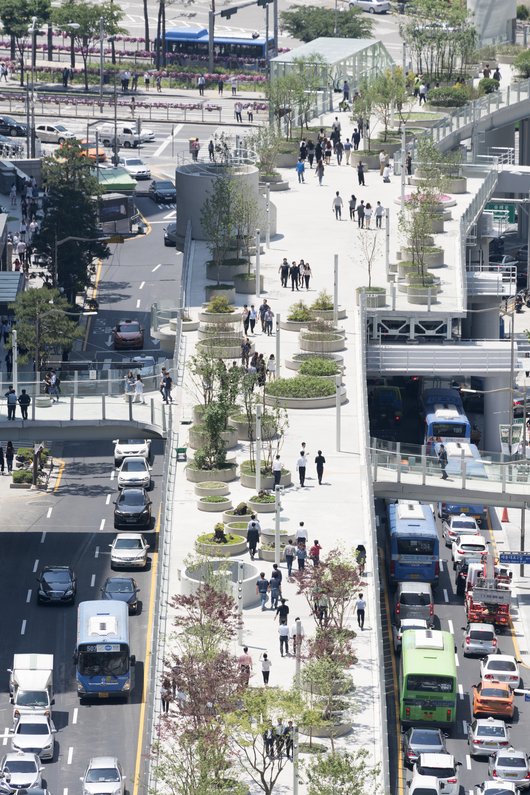

Transforming cities
3Deluxe Architecture believes that cars are set to gradually disappear from cities. Former roads and pedestrian areas should be redefined. The result of this transformation should be a people-friendly, urban landscape for environmentally friendly mobility, leisure, relaxation and communication, all in one. Kaunas, a city in south-central Lithuania with a 300,000-strong population stands as an example here. 3Deluxe found a largely unused square in the centre, one surrounded by historic buildings. The requisite measures included the complete redesign of the central square, including the adjacent buildings on the east side in the form of three new builds, two refurbishments and an underground car park that spans the entire square. The result is a 22,000-square-metre city playground. 3Deluxe rose to this challenge with a two-level design that structures the entire area as a grid of visible floor lines. One level is strictly linear and provides the historic context. Existing sight and path axes are taken into account here. Among plenty of greenery, there are lawns for soaking up the sun, a skate park, a programmable fountain and an event venue. The result? An urban landscape that recalls an English garden – topographically diverse, surprising, colourful and versatile. Native pines and birches as well as bug-friendly grasses and perennials have been used here. Kaunas stands as a model for how to revitalise derelict sites, offer a space for people to get together, combat climate change, and simultaneously create valuable inner-city recreational spaces.
Grünes Stadtwohnzimmer
Since Maebashi, located in the Japanese prefecture of Gunma, announced its motto Where Good Things Grow in 2016, the industrial city formerly known for its silk factories has experienced a boom that has contributed significantly to the revitalisation of the city. Here, the Shiroiya Hotel is known as the green city living room. Hitoshi Tanaka, President of the Jins Eyewear Company who also hails from Maebashi, bought the dilapidated building. His goal? To revitalise and rejuvenate the dying centre of Maebashi and establish a green city living room for the university city – and former industrial town - that lies around 100 kilometres north of Tokyo. Sou Fujimoto Architects renovated the main four-storey building made of reinforced concrete, which Tanaka wanted to name the Green Tower. The architects quickly recognised the potential of the site and decided to remove the walls and floors on all four floors. The resulting atrium, in conjunction with the ground-floor lounge, brought to life the vision of a living room for the city, inviting neighbours, passers-by and tourists to meet here naturally and casually.
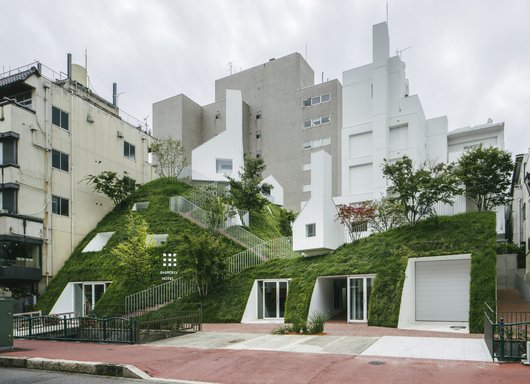

Where there was previously a terrace over a tributary of the River Tone, the new part of the building now adjoins the existing building with a one-storey height difference. Sou Fujimoto Architects replaced the original public footpath from the main road at the front to the back of the main building with a green bank running in a similar fashion to compensate for the difference in height. “We felt that something drastic was needed. Taro Okamoto's monument – ‘Bell of the Sun’ - was being moved to the city at the time, and so the idea of incorporating a mound into the new building was born”, says Sou Fujimoto, describing how the idea came about. The design of the Green Tower is inspired by the city’s former riverbanks and is in line with the new slogan of the city of Maebashi: ‘Mebuku’ or ‘Sprouting’.
Green skyscraper
Back to Singapore: Buildings can also contribute to the microclimate, as shown by the green skyscraper Marina One. Ingenhoven Architects see their building as an innovative contribution to the debate on megacities, which face great challenges, especially in tropical regions, in light of climate change and constant population growth. The mixed-use and high-density building complex spanning more than 400,000 square metres surrounds the Green Heart - a public space extending over several storeys - with its four high-rise buildings standing together. This three-dimensional green oasis reflects the diversity of tropical flora.
The Green Heart as the core concept of Marina One was realised by the team of architects in close cooperation with the landscape architects of Gustafson Porter + Bowman. The geometry of the building and the gardens allows for natural ventilation and results in a pleasant microclimate. The largest public green space in Singapore’s Marina Bay Central Business District, Marina One provides a natural habitat with a usable area of 125% of the site’s original space. Marina One has four Green Mark Platinum ratings and LEED Platinum. The two office towers have 175,000 square metres of usable space each, while the two residential towers house approximately 3,000 residents in 1,042 city apartments and penthouses.
The Green Heart has over 350 different tree and plant species, including 700 trees, on a green area of 37,000 square metres. Conceptually inspired by the natural climate and elevation changes of a rainforest, the landscape architecture is based on a green valley that varies according to level. The compact and efficient floor plan makes use of energy-saving ventilation systems, highly effective external solar shading systems and glazing that reduces solar heat in the building. Marina One is directly connected to the public transport network - there are underground stations, bus stops as well as bicycle parking and charging stations for electric vehicles.
The green city is no longer an illusion, but it calls for courageous developers and innovative architects willing to embrace responsibility to work on the sustainability of cities.

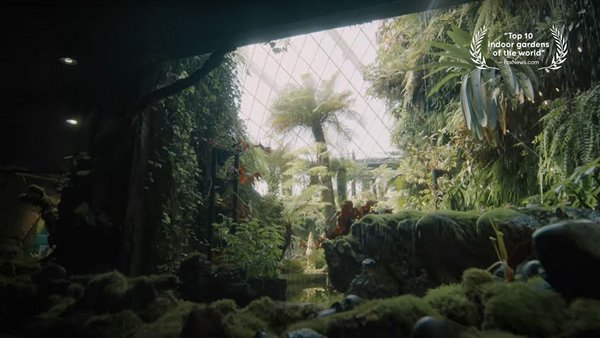
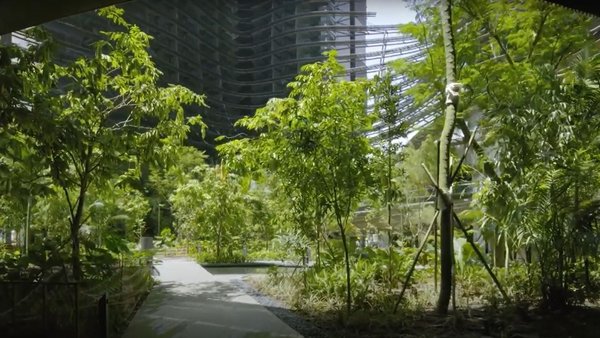
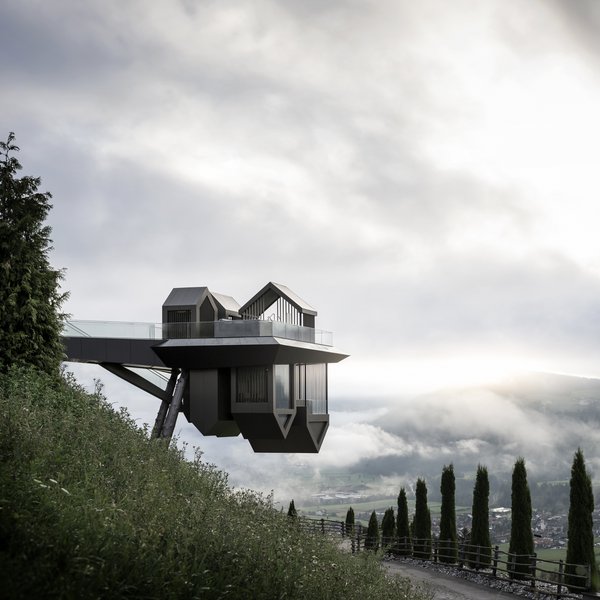
![[Translate to Englisch:] (c) PORR [Translate to Englisch:] (c) PORR](/fileadmin/_processed_/3/3/csm_5V5A3742_4c8554371e.jpg)